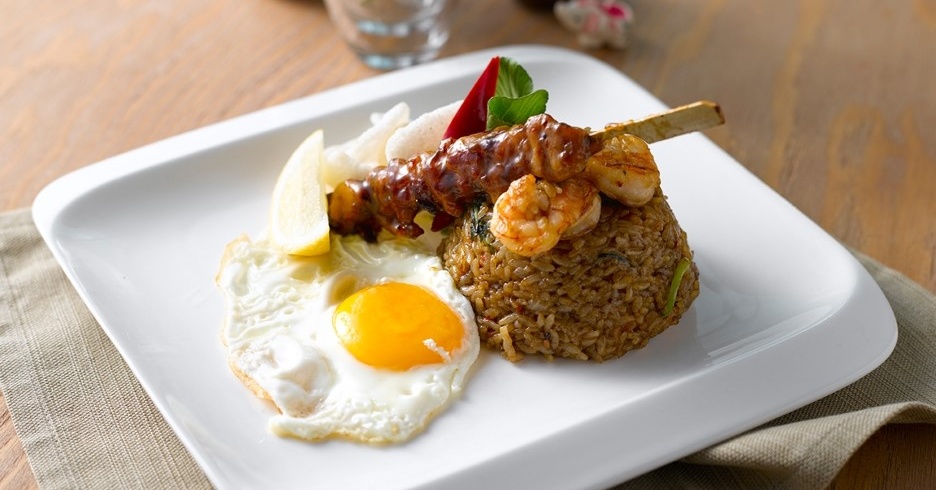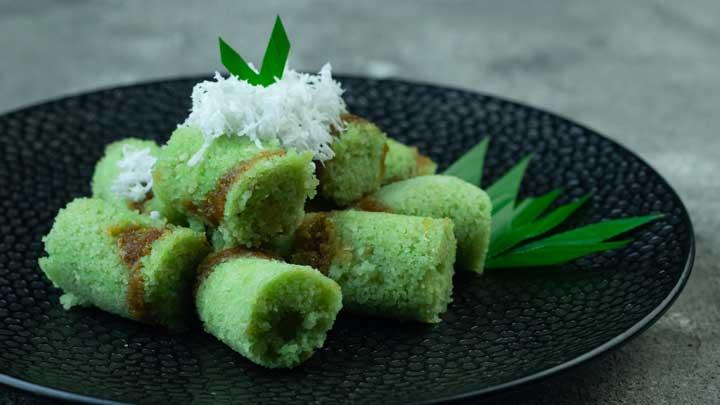Few dishes capture the essence of a nation’s culinary identity like Nasi Goreng, Indonesia’s beloved fried rice. This flavorful, aromatic, and versatile dish has deep cultural roots and has won hearts across Southeast Asia and beyond.
Unlike typical Chinese-style fried rice, Nasi Goreng is uniquely Indonesian, often cooked with sweet soy sauce (kecap manis), garlic, shallots, shrimp paste (terasi), and a hint of chili. Served with fried egg (telur ceplok), crispy shallots, and prawn crackers (kerupuk), Nasi Goreng is a perfect balance of sweet, savory, spicy, and umami flavors.
In this guide, we will explore:
- The history and cultural significance of Nasi Goreng
- Regional variations of Nasi Goreng across Indonesia
- Step-by-step recipe for authentic Nasi Goreng
- Best ingredients and condiments for enhancing flavor
- How Nasi Goreng became an international sensation
1️⃣ The Origins & Cultural Significance of Nasi Goreng

Chinese Influence & Local Adaptation 🇨🇳 → 🇮🇩
- Nasi Goreng traces its origins back to Chinese fried rice, brought to Indonesia by Chinese traders and immigrants in the 10th century.
- However, unlike Chinese-style fried rice, Indonesians added their own twist by incorporating sweet soy sauce, shrimp paste, and local spices.
A Dish Born Out of Necessity
- Historically, Indonesians fried leftover rice to prevent food waste. Stir-frying with spices ensured the rice stayed fresh and flavorful.
- Over time, Nasi Goreng became a beloved street food and household staple, enjoyed for breakfast, lunch, and dinner.
📌 Fun Fact: In 2011, CNN ranked Nasi Goreng #2 in its list of “World’s 50 Best Foods” based on global fan votes!
2️⃣ Regional Variations of Nasi Goreng in Indonesia
Each region in Indonesia has its own unique spin on Nasi Goreng, using local ingredients and cooking styles.
🔥 1. Nasi Goreng Jawa (Javanese Fried Rice)
Uses ground shallots, garlic, and chili paste for a richer taste.
Often mixed with chicken, shrimp, and vegetables.
Traditionally cooked on a charcoal stove, giving it a smoky flavor.
📌 Signature Ingredient: Kecap manis (sweet soy sauce) for caramelized flavor.
🌶️ 2. Nasi Goreng Kampung (Village-Style Fried Rice)
Rustic and simple, usually cooked with anchovies (ikan teri) or salted fish.
Less sweet, more spicy and savory, with a bold shrimp paste (terasi) aroma.
Topped with fresh cucumbers and tomatoes for contrast.
📌 Signature Ingredient: Dried anchovies for a crunchy, umami kick.
🦐 3. Nasi Goreng Seafood (Seafood Fried Rice)
Loaded with shrimp, squid, and fish, perfect for coastal regions.
Usually stir-fried with butter or margarine for extra richness.
Garnished with fried shallots and sambal for heat.
📌 Signature Ingredient: Fresh seafood and shrimp paste for intense umami.
🥩 4. Nasi Goreng Sapi (Beef Fried Rice)
Popular in Jakarta, featuring thinly sliced marinated beef.
Often cooked with oyster sauce and Worcestershire sauce for depth.
Served with acar (pickled vegetables) and prawn crackers.
📌 Signature Ingredient: Beef slices caramelized with kecap manis.
3️⃣ How to Make Authentic Nasi Goreng at Home
🛒 Ingredients (Serves 2-3)
For the Rice:
3 cups cooked jasmine rice (day-old rice is best)
2 tbsp vegetable oil or butter
For the Spice Base (Bumbu):
3 shallots (finely chopped)
2 cloves garlic (minced)
2 red chilies (sliced, adjust for spice level)
1 tsp shrimp paste (terasi) – optional, but recommended
For the Sauce:
2 tbsp kecap manis (sweet soy sauce)
1 tbsp soy sauce
½ tsp salt
½ tsp white pepper
Protein & Add-Ins (Customize to Taste!):
½ cup diced chicken, shrimp, or beef
1 egg (for frying separately or scrambling in the rice)
¼ cup sliced green onions
For Garnishing:
Fried shallots
Cucumber & tomato slices
Prawn crackers (kerupuk)
🔪 Step-by-Step Instructions
1. Prepare the Rice
Use cold, day-old rice for the best texture.
If using fresh rice, spread it on a tray and let it cool for at least 30 minutes.
📌 Pro Tip: Using fresh rice makes fried rice mushy—always use leftover rice for a fluffy texture.
2. Prepare the Spice Base (Bumbu)
In a mortar and pestle, grind shallots, garlic, chili, and shrimp paste into a paste.
If using a blender, add a little oil to help it blend smoothly.
📌 Pro Tip: Shrimp paste (terasi) adds deep umami flavor, but you can skip it if you prefer.
3. Cook the Protein
Heat 2 tbsp oil in a wok or large pan over medium-high heat.
Add chicken, shrimp, or beef and stir-fry for 2-3 minutes until cooked.
📌 Alternative: You can also use tofu for a vegetarian version.
4. Stir-Fry the Rice
Push the protein to one side of the pan.
Add the spice paste (bumbu) and fry for 30 seconds until fragrant.
Add the cold rice, breaking up any clumps.
📌 Pro Tip: Stir-fry quickly over high heat for a smoky “wok hei” flavor.
5. Season the Nasi Goreng
Add kecap manis, soy sauce, salt, and white pepper.
Stir well to coat the rice evenly.
📌 Want it spicier? Add a spoonful of sambal oelek (Indonesian chili paste).
6. Serve with Toppings
Top with a fried egg (telur ceplok).
Garnish with fried shallots, cucumber slices, and prawn crackers.
📌 Best Side Dishes: Serve with sambal, satay, or chicken skewers.
4️⃣ How Nasi Goreng Became a Global Sensation
Street Food Favorite – In Indonesia, Nasi Goreng is sold in warungs (food stalls) and cooked fresh on charcoal stoves.
Global Fast Food Chains – McDonald’s Indonesia even offers Nasi Goreng meals!
Celebrity Endorsements – Gordon Ramsay and Anthony Bourdain have praised Nasi Goreng’s rich flavors.
Indonesian Diaspora – Indonesian communities worldwide have helped popularize Nasi Goreng in Europe, Australia, and the U.S..
📌 Fun Fact: Former U.S. President Barack Obama called Nasi Goreng one of his favorite dishes from his childhood in Indonesia!
Conclusion: The Heart of Indonesian Comfort Food
Nasi Goreng is more than just fried rice—it’s a dish filled with history, flavor, and cultural pride. Whether enjoyed on a bustling Indonesian street or cooked at home, its rich, smoky aroma and bold udoy88 flavors never fail to satisfy.
💬 Have you tried making Nasi Goreng at home? What’s your favorite way to enjoy it? Share your thoughts below! 🍚🔥🇮🇩




















